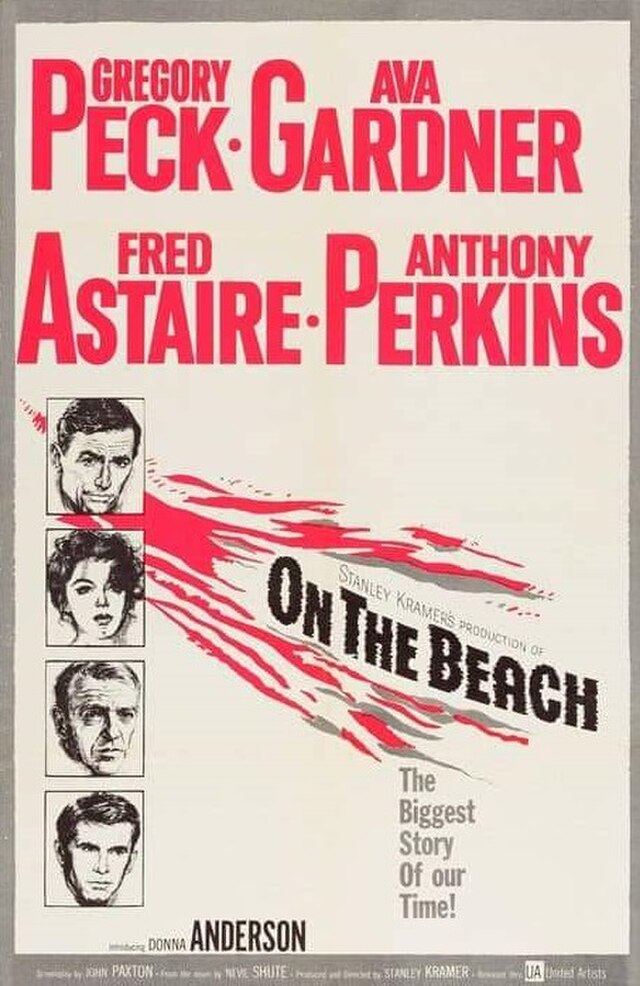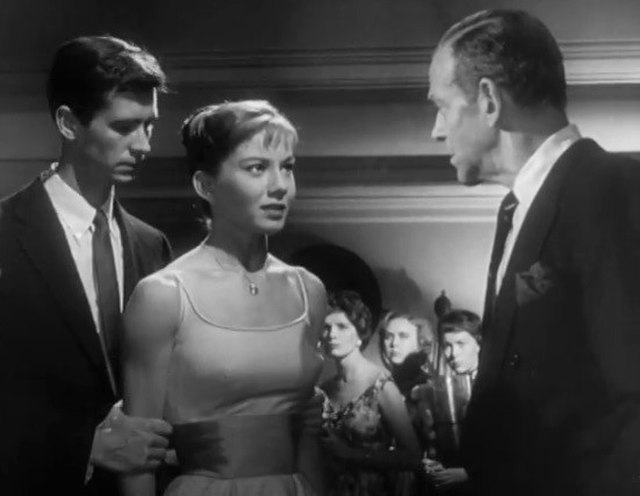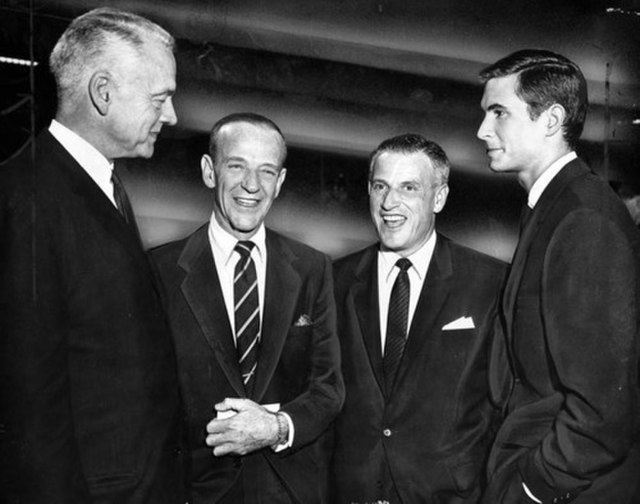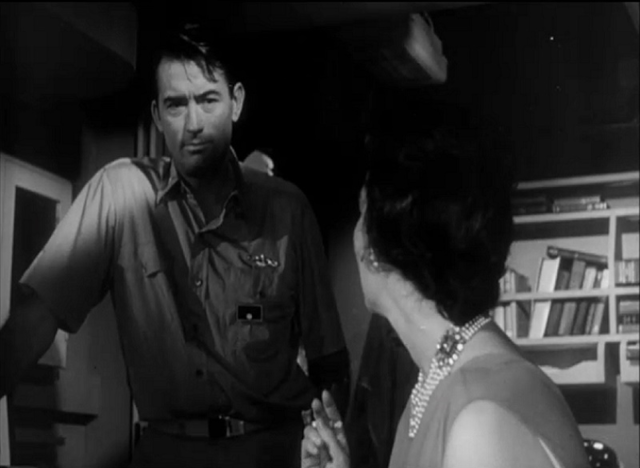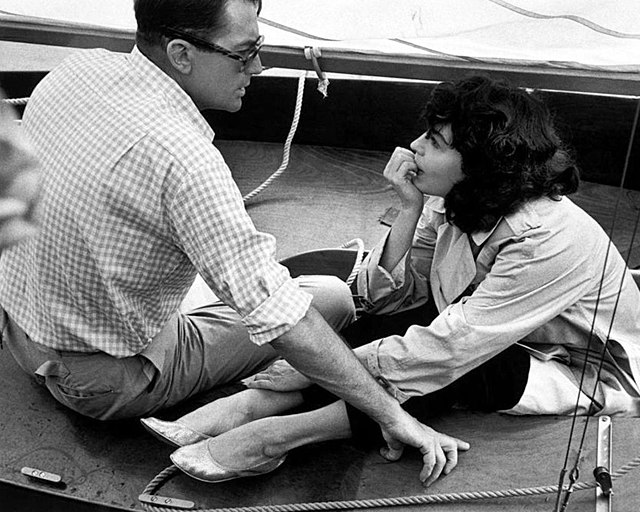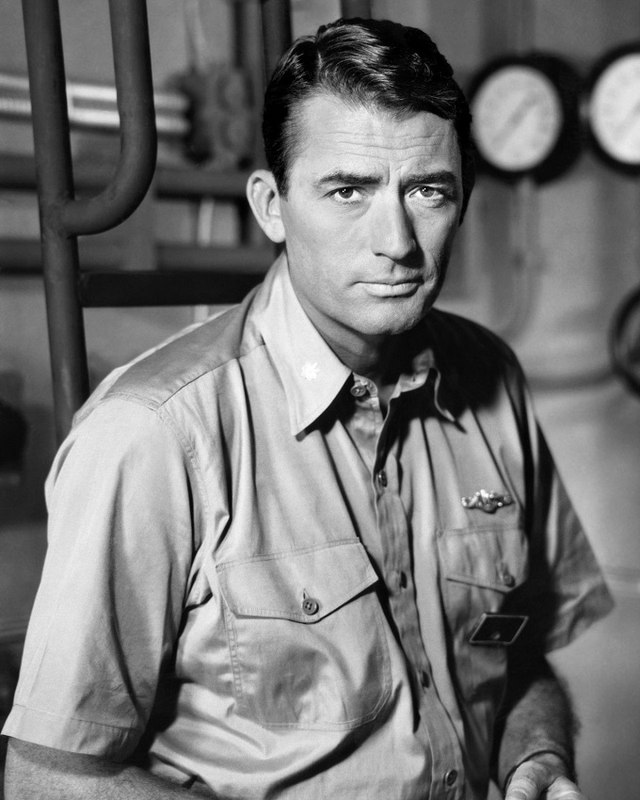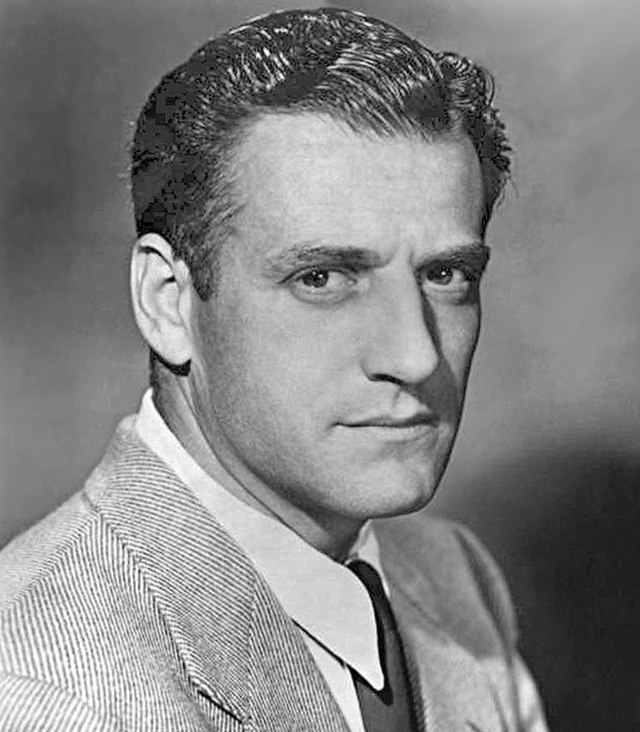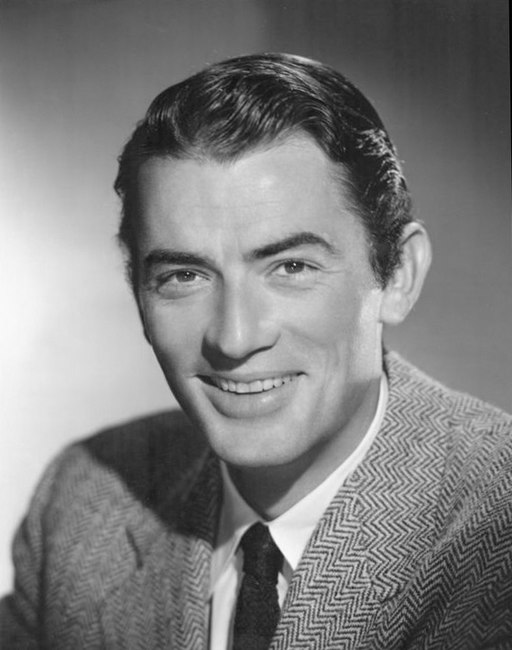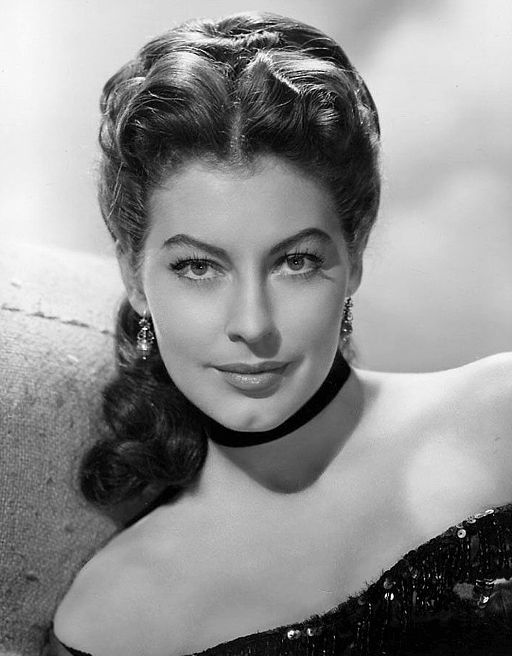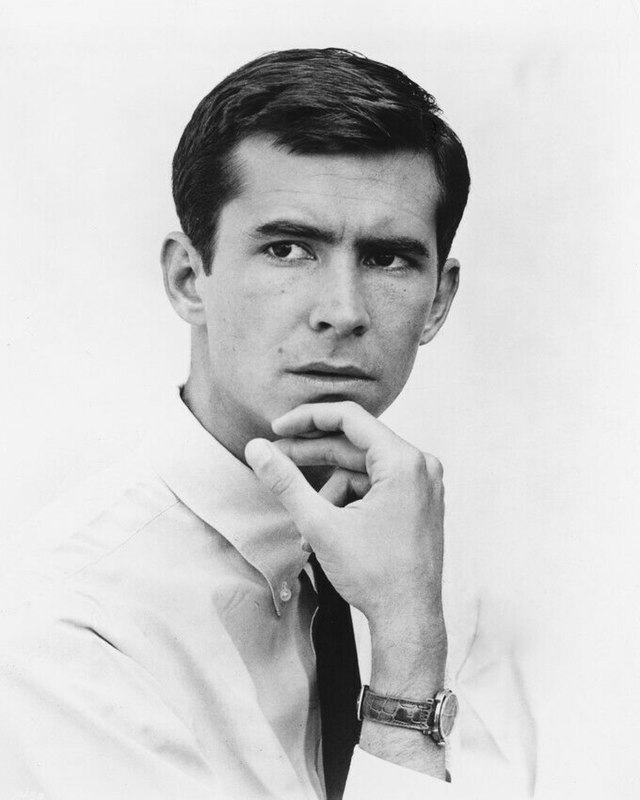On the Beach - 1959
back| Released by | United Artists |
| Director | Stanley Kramer |
| Producer | Stanley Kramer |
| Script | John Paxton (adapted from the novel On the Beach by Nevil Shute) |
| Cinematography | Giuseppe Rotunno |
| Music by | Ernest Gold |
| Running time | 134 minutes |
| Film budget | $2.9 million |
| Box office sales | $5 million |
| Main cast | Gregory Peck - Ava Gardner - Fred Astaire - Anthony Perkins - Donna Anderson |
On the Beach
A Haunting Meditation on Humanity’s Resilience in the Face of Inevitable Extinction
On the Beach (1959), directed by Stanley Kramer, is a haunting post-apocalyptic drama set in Australia after a global nuclear war has wiped out humanity in the Northern Hemisphere.
The story follows American submarine commander Dwight Towers (Gregory Peck) and the people he meets in Melbourne, including the grieving Moira Davidson (Ava Gardner), as they confront impending death from radioactive fallout.
The film’s sober tone and closing message, "There is still time… Brother," serve as a stark warning, urging audiences to reflect on nuclear disarmament and humanity's responsibilities.
Related
On the Beach - 1959
On the Beach (1959) is a haunting and thought-provoking film directed by Stanley Kramer, based on Nevil Shute's novel of the same name. This post-apocalyptic drama explores the emotional and psychological impact of nuclear fallout on a group of survivors in Australia, one of the last unaffected places on Earth. Set in the aftermath of a devastating global nuclear war, the film presents a chilling vision of humanity’s self-destruction and the quiet dignity with which people confront their mortality.
Summary
The story unfolds in 1964, two years after an intense nuclear conflict has devastated nearly every continent. Radioactive fallout from the war has engulfed the Northern Hemisphere, eradicating all life. The only remaining habitable areas are those in the Southern Hemisphere, particularly Australia, where the residents live in relative peace but under the shadow of imminent death as the radiation cloud slowly approaches.
The film centers on Commander Dwight Towers (played by Gregory Peck), an American submarine captain who arrives in Melbourne, Australia, aboard the USS Sawfish. Towers is haunted by the memories of his family, lost to the war back home in the United States. While in Melbourne, he meets Moira Davidson (Ava Gardner), a spirited but emotionally broken woman who uses alcohol to cope with the inevitable end. Despite the dire circumstances, Moira and Dwight form a bond, finding comfort in each other's presence.
Towers is soon assigned to lead a mission to the Northern Hemisphere after faint but seemingly hopeful radio signals are detected from San Diego, California. Accompanied by an Australian scientist and racing driver Julian Osborn (Fred Astaire), and Lieutenant Peter Holmes (Anthony Perkins), Towers sets out to determine whether anyone has survived the disaster. The crew’s hope is briefly rekindled, but they are soon disillusioned to discover the signal is merely an accident—caused by a window shade hitting a telegraph key due to the wind. Realizing no one is alive, Towers and his crew face the painful truth that all human life in the Northern Hemisphere is extinct, with Australia soon to follow.
Upon returning to Melbourne, each character grapples with the impending end in their own way. Julian decides to participate in one last Grand Prix, risking his life in the only way he feels he can control. Peter Holmes, who has a young wife, Mary (Donna Anderson), and an infant daughter, struggles to reconcile his duty as a soldier with his love and responsibility to his family. He ultimately obtains a supply of government-issued poison to spare his family from the agonizing effects of radiation poisoning.
Towers and Moira grow closer as they share quiet moments, but their relationship is tinged with a profound sadness. Towers cannot allow himself to fully embrace a new love, feeling loyal to his deceased family, while Moira faces the painful reality of a future she will never have. As the radiation cloud moves closer, the Australian government provides the populace with pills to die painlessly. The film culminates in a series of heart-wrenching farewells as the main characters face their fate.
In the end, Commander Towers decides to take the Sawfish back out to sea, honoring the commitment he made to his crew and country, even in the face of certain death. Moira watches from a hill as his submarine leaves port, symbolizing a poignant farewell to hope and life as the city falls silent.
Analysis
On the Beach is a powerful exploration of the human spirit when confronted with existential despair. Unlike many disaster films of its time, it rejects melodrama and instead focuses on the quiet strength and vulnerabilities of its characters. The story is less about the destruction itself and more about how people cope when they know their end is inevitable.
• Themes of Mortality and Human Resilience: At its core, On the Beach is a meditation on mortality. Each character reflects different aspects of humanity’s response to death: denial, acceptance, and the desire to find meaning in life’s final moments. Moira, for example, represents the search for connection, even as time runs out. Her relationship with Towers embodies the hope of redemption and human connection, even in the bleakest circumstances.
• Isolation and Futility: The film emphasizes the profound isolation of Australia from the rest of the world, a feeling that intensifies as each character realizes that help is not coming. The survivors live with an acute awareness of their isolation, leading to a pervasive sense of futility, as seen in the mission to San Diego. The expedition's discovery that no life remains shatters any illusion of hope, leaving the characters to face their solitude.
• Responsibility and Choice in Facing Death: Julian Osborn and Peter Holmes embody contrasting approaches to facing death. Julian’s decision to race his car to its limits in one final act of reckless abandon reflects a need to assert control over his fate. Holmes, on the other hand, faces a moral dilemma regarding his family’s future. His decision to use the government-issued poison pills speaks to the despair and sacrifice that permeate the narrative. Each character’s response to the impending end raises philosophical questions about free will and agency in the face of inevitability.
• Symbolism and Cinematography: The cinematography by Giuseppe Rotunno adds a layer of poignancy, often portraying the vast, empty landscapes of Australia that parallel the emptiness left in the wake of the nuclear disaster. As the film progresses, the deserted streets of Melbourne and the quiet, somber faces of its inhabitants serve as a powerful metaphor for the death of civilization. The scenes of the submarine’s departure symbolize humanity’s final journey, with no destination in sight.
Conclusion
On the Beach is a sobering reminder of the potential consequences of nuclear conflict. Rather than relying on sensationalism, the film resonates through its emotional depth and quiet portrayal of human courage in the face of extinction. The film’s restrained approach to apocalyptic cinema allows for a deeply reflective experience, urging audiences to consider the implications of nuclear war on a profoundly personal level. By focusing on the individual stories of those left behind, it highlights the tragedy of a world that has lost sight of its humanity, serving as both a cautionary tale and a powerful human drama.
Classic Trailer On the Beach
Full Cast
• Gregory Peck as Commander Dwight Towers
• Ava Gardner as Moira Davidson
• Fred Astaire as Julian Osborn
• Anthony Perkins as Lieutenant Peter Holmes
• Donna Anderson as Mary Holmes
• John Tate as Admiral Bridie
• Harold Stone as Lieutenant Commander Ackerman
• Lola Brooks as Lieutenant Hosgood
• Ken Wayne as Lieutenant Benson
• Guy Doleman as Dr. King
• Richard Meikle as Davis
• Joe McCormick as Prime Minister
• Kevin Brennan as Mr. Davidson
• John Meillon as Lieutenant Sunderstrom
• John Gray as Bill Davidson
• Lorna Lesley as Joanna Holmes (uncredited)
Restrained Direction by Stanley Kramer
Stanley Kramer’s direction in On the Beach is both restrained and meticulously crafted, creating a somber and thought-provoking atmosphere that underscores the film’s message about the perils of nuclear war. Known for his commitment to socially conscious filmmaking, Kramer approached On the Beach with a sense of moral urgency, directing it not as a conventional disaster movie but as an intimate, human exploration of mortality and ethical dilemmas in the face of inevitable destruction.
Tone and Pacing
Kramer's direction is deliberately paced, allowing the emotional weight of the story to settle gradually over the audience. Instead of using fast-paced scenes to amplify suspense, he chose a slow, contemplative rhythm, mirroring the creeping radiation cloud and the approaching end. This pacing heightens the tension, creating a quiet, almost suffocating atmosphere that draws viewers into the characters' inner turmoil. His choice to focus on the quiet moments between characters—rather than scenes of chaos or panic—invites viewers to consider the profound sadness and dignity with which these individuals confront their fate.
Character Focus and Intimacy
Kramer's approach to character is one of empathy and deep exploration. He concentrates on each character’s emotional journey, capturing the unique ways they grapple with impending death. Gregory Peck’s Commander Towers, for instance, is portrayed not as a hardened military man but as a vulnerable person grieving the loss of his family and struggling to let go of a life he once knew. Ava Gardner’s Moira, similarly, is given space to reveal her fears and insecurities, particularly in her moments of introspection. By directing the actors to embrace subtle, nuanced performances, Kramer brings an intimacy that makes the characters relatable, grounding the film's apocalyptic themes in real human emotions.
Visual Storytelling and Symbolism
Kramer’s visual storytelling emphasizes isolation and desolation, using empty streets, barren beaches, and vast open seas to symbolize humanity’s final days. The camera often lingers on landscapes devoid of life, reinforcing the silence and emptiness that permeate the world. He also employs a muted, almost monochromatic color palette, underscoring the bleakness of a post-nuclear environment. This visual choice reflects the moral “grayness” of the situation—without clear villains or heroes, only a shared sense of loss. The final image of the empty city as the radiation cloud draws closer serves as a stark visual reminder of the devastation wrought by human folly, amplifying the film's message without the need for excessive dialogue.
Theme and Message
Kramer directs On the Beach as a parable rather than an action-driven narrative, using his craft to underscore the urgent moral questions posed by nuclear proliferation. His decision to portray the end of humanity in a subdued, understated manner speaks to his belief that the story itself was powerful enough to carry the film. The message against nuclear warfare is evident in every scene, yet Kramer avoids didacticism by focusing on human relationships rather than overt political statements. This subtle approach makes the film’s anti-nuclear stance resonate more powerfully, as viewers are invited to draw their own conclusions about the characters' choices and the wider implications of a world destroyed by war.
Handling of Atmosphere and Music
The score, composed by Ernest Gold, is used sparingly and poignantly, adding emotional depth without overpowering the story. Kramer knew when to let silence dominate a scene, allowing the weight of stillness to underscore the tension and dread facing the characters. The iconic use of "Waltzing Matilda" as a recurring motif evokes both a sense of national pride and deep sadness, underscoring the tragic fate of Australia and, by extension, humanity.
Restraint and Subversion of Expectations
Kramer avoids many of the typical tropes associated with disaster or sci-fi films of his time. Rather than showing large-scale destruction or sensationalizing the horrors of radiation, he emphasizes quiet resilience and dignity. This restraint gives the film a timeless quality, allowing it to stand out from other Cold War-era films that often relied on spectacle or action. By subverting the audience’s expectations, Kramer crafts a more introspective and moving experience that remains relevant today.
Moral Vision
Kramer's direction reflects a profound belief in humanity’s capacity for both folly and redemption. He does not shy away from portraying the darkness of human decisions, but he also highlights the resilience, courage, and love that persist even in the face of annihilation. His commitment to moral storytelling is evident in every frame, inviting viewers to confront the potential consequences of technological advancement without ethical restraint. Rather than resorting to overt preaching, Kramer’s direction allows the story itself to serve as a cautionary tale.
Conclusion
Stanley Kramer’s direction in On the Beach elevates the film from a simple anti-nuclear statement to a profound meditation on humanity’s relationship with death, responsibility, and each other. His restrained yet powerful approach allows the film’s themes to resonate with audiences on an emotional level, ensuring its status as a timeless and deeply impactful piece of cinema. Through careful pacing, a focus on human relationships, and a visually haunting style, Kramer crafts a film that is as introspective as it is socially relevant, leaving a lasting impression on anyone who watches it.
Gergory Peck’s Understated Performance
Gregory Peck’s performance in On the Beach is nuanced and profoundly affecting, bringing an understated gravitas to the character of Commander Dwight Towers. Known for his roles as a symbol of integrity and stoic masculinity, Peck’s portrayal here diverges into more vulnerable territory, embodying a man haunted by the irreversible loss of his family and the world he once knew. His portrayal is marked by a quiet intensity that captures the internal struggle of a man forced to confront the unimaginable end of humanity with courage and restraint.
Emotional Subtlety and Depth
Peck’s performance is characterized by his remarkable subtlety. Rather than delivering overt displays of grief or anger, he conveys Dwight’s internal turmoil through restrained gestures and expressions, relying on his eyes and posture to communicate deep sadness and regret. In scenes where Towers reflects on his lost family, Peck’s face carries a weight of sorrow and suppressed pain that resonates deeply. This understated approach allows viewers to see the character's emotional burden without the need for melodrama, adding authenticity to his portrayal. Peck’s ability to imply complex emotions without overt dramatics draws the audience into his world, allowing them to feel the unspoken grief he carries with him.
Depiction of Duty and Loyalty
As Commander of the USS Sawfish, Peck’s Dwight Towers is a man bound by duty, a trait that is central to his character arc. Peck captures this sense of duty with a dignified poise, maintaining his professionalism even as he grapples with personal tragedy. His commitment to his role as a leader, despite the inevitability of death, reflects the strength of character that has often defined Peck’s roles. In his interactions with the crew and his response to the discovery that no life remains in the Northern Hemisphere, Peck portrays a complex mixture of hope, resignation, and moral responsibility, elevating Towers from a simple military man to a figure of steadfast resilience.
His sense of loyalty extends beyond his professional duties; he is also emotionally loyal to his deceased family, a theme that becomes particularly poignant in his interactions with Moira Davidson (Ava Gardner). Peck navigates this internal conflict with great sensitivity, allowing glimpses of the man beneath the officer. His resistance to fully engaging in a romantic relationship with Moira is played with touching sincerity, highlighting the struggle between his sense of commitment to his lost loved ones and his need for human connection.
Human Vulnerability and Strength
Peck’s portrayal of Towers adds an element of vulnerability that humanizes the character, making him relatable and sympathetic. Unlike the strong, resolute figures he often portrayed, Towers is shown as a man with deep vulnerabilities—haunted by memories, burdened by a sense of survivor's guilt, and emotionally torn by the world’s collapse. Peck brings out these vulnerabilities in small, powerful moments, such as the scene where Towers confides in Moira about his family. His voice softens, his expression shifts, and there is a visible sadness in his eyes. These moments of vulnerability serve to deepen his character, showing that beneath the steadfast officer lies a man who is grieving, longing, and profoundly alone.
Understated Chemistry with Ava Gardner
The chemistry between Peck and Gardner is one of restrained yearning and unfulfilled potential. Peck’s scenes with Gardner are layered with a quiet tension, as his character remains emotionally closed off, still tethered to his past, yet visibly drawn to Moira’s kindness and strength. Rather than showcasing a traditional romance, Peck’s performance suggests a deeper, more complex connection based on shared grief and the need for solace. His subtle expressions and glances toward Gardner convey a mixture of respect, admiration, and sorrow. Their relationship is handled with a delicacy that highlights Towers' inner conflict; he wants to love but cannot allow himself to let go of his family’s memory. This balance of attraction and restraint is masterfully played by Peck, adding to the film’s emotional impact.
Commanding Presence and Physicality
Even in moments of despair, Peck maintains a dignified physical presence that reinforces Towers' role as a leader. His tall, stoic figure and composed posture communicate the strength that the character embodies as both a commander and a man facing the end of the world. In scenes on the submarine, Peck’s movements are deliberate and authoritative, reflecting a sense of duty and composure. His physicality in these scenes contrasts sharply with the emotional turmoil he conveys in more intimate moments, underscoring the duality of Towers’ character as both a protector and a grieving survivor. Peck’s ability to embody this balance of strength and vulnerability is a testament to his skill as an actor.
A Reflection of Humanity’s Resilience
Gregory Peck’s portrayal of Dwight Towers is not only central to the film but also a vessel for its larger themes of resilience and acceptance. His performance reflects humanity’s quiet determination to face mortality with dignity and grace. Peck’s Dwight Towers becomes a figure of hope, not in the sense of survival but in the sense of maintaining one’s humanity in the face of inevitable destruction. Through his calm demeanor, piercing gaze, and moments of introspection, Peck portrays Towers as a man who, despite immense suffering, refuses to lose his sense of self or compromise his values. This resilience resonates with audiences, offering a moving depiction of what it means to face the end with integrity.
Conclusion
Gregory Peck’s performance in On the Beach is a masterclass in restraint, emotional complexity, and quiet strength. He brings a deeply human quality to Dwight Towers, allowing the character’s pain and resilience to shine through without the need for exaggerated expressions or actions. His subtle portrayal elevates the film’s impact, reminding viewers of the depth of human emotion and the courage it takes to confront the unthinkable. Through his nuanced approach, Peck transforms Towers into a timeless figure of dignity and humanity, anchoring the film’s message with a performance that is as haunting as it is profound.
Notable Quotes from On the Beach
Moira Davidson:
“There’s still time... if you’re quick.”
• Moira’s words capture the fleeting nature of life as she encourages people to seize the moments they have left, reflecting the film’s theme of living fully even when time is running out.
Commander Dwight Towers:
"There is no way to change what’s happened. What we have to do now is try to make things right before it’s too late."
• Towers speaks to the idea of accepting the consequences of humanity’s actions, emphasizing responsibility and resilience in the face of irreversible damage.
Julian Osborn:
“Who would ever have believed that human beings would be stupid enough to blow themselves off the face of the Earth?”
• Julian’s bitter statement reflects the film’s anti-nuclear message, highlighting the tragic folly of nuclear warfare and humanity’s capacity for self-destruction.
Commander Dwight Towers:
“I keep thinking about my family... and I know they’re gone, but I still think about them.”
• This quote shows Dwight’s grief and survivor’s guilt as he grapples with the loss of his family, embodying the pain of moving forward when one’s world has been irrevocably altered.
Peter Holmes:
"It’s strange, isn’t it? After everything, we’re still here—still breathing."
• Peter’s words are poignant, illustrating the quiet resilience of the characters, even as they confront the reality that the end is inevitable.
Moira Davidson:
“We don’t have much, but at least we have each other.”
• Moira’s remark underlines the importance of human connection, suggesting that love and companionship are what bring meaning and solace in a bleak and uncertain world.
Julian Osborn (reflecting on his final race):
“There’s no point in driving slowly, is there?”
• Julian’s comment is both literal and metaphorical, showing his desire to embrace life with intensity before the end. It reflects the urgency to live fully, even when facing death.
Final on-screen message:
“There is still time... Brother.”
• The film ends with this message, a call to action and reflection for viewers, reminding them that, unlike the characters, they still have the opportunity to make different choices for humanity’s future.
Notable Scenes from the Movie
The Submarine's Arrival in Melbourne
• When Commander Dwight Towers and the USS Sawfish arrive in Melbourne, Australia, the scene is quiet and subdued, contrasting with the usual bustling welcome a U.S. submarine might receive. This somber arrival underscores the gravity of the situation—Australia is one of the last habitable places on Earth, and the people there are aware that their time is running out. This moment sets the tone for the film, emphasizing isolation and the unique circumstances these characters face in a post-apocalyptic world.
The Dance Party with "Waltzing Matilda"
• One of the most memorable scenes in the film is a dance party attended by Moira and Dwight. "Waltzing Matilda," an Australian folk song, plays in the background, infusing the scene with a poignant sense of national pride and melancholy. As people dance and enjoy themselves, they do so knowing that the end is imminent, which gives the scene an eerie and bittersweet tone. This moment highlights the tension between celebration and despair, capturing the spirit of resilience and the desire to find joy even in the darkest times.
Julian Osborn’s Final Grand Prix Race
• Fred Astaire’s character, Julian Osborn, participates in a grueling car race as his way of confronting death on his own terms. This high-speed, chaotic scene is a stark departure from the film’s otherwise somber pace. Julian drives recklessly, knowing that winning or losing the race holds no meaning in the face of impending death. The intensity of the race serves as a metaphor for life’s fleeting nature, and Julian’s reckless abandon reflects his determination to feel alive one last time before succumbing to the inevitable.
The Discovery of the Signal in San Diego
• In one of the most suspenseful sequences, Dwight and his crew travel north to San Diego after detecting faint radio signals, clinging to the hope that someone has survived in the Northern Hemisphere. The submarine crew's journey is filled with tension and anticipation as they explore the abandoned city. However, they eventually discover that the signals are simply the result of a wind-blown bottle accidentally tapping a telegraph key. This crushing revelation forces the characters to accept that there truly are no survivors, deepening the film’s sense of despair and underscoring the futility of hope in the face of total annihilation.
Peter and Mary Holmes Discussing Their Daughter’s Future
• In a heartbreaking domestic scene, Peter Holmes and his wife Mary struggle with how to protect their young daughter from the effects of radiation poisoning. They come to the devastating decision to use government-issued poison pills to spare her a slow, painful death. Mary’s resistance to this idea—and Peter’s quiet, somber determination—make for an emotionally charged scene that speaks to the difficult moral choices faced by parents in an impossible situation. This scene captures the profound grief and sacrifice at the heart of the story, revealing the characters' humanity and the lengths they will go to protect their loved ones.
Dwight’s Farewell to Moira
• As the radiation cloud draws closer, Dwight decides to take the Sawfish back out to sea, choosing to remain with his crew and stay faithful to his duty until the very end. Moira watches him depart from a hill, realizing that they may never see each other again. The unspoken love and respect between them make this farewell deeply poignant, symbolizing a final farewell to hope, love, and life. Moira’s lonely figure watching Dwight leave is one of the film’s most haunting images, encapsulating the sorrow and inevitability of the characters' fate.
The Empty Streets of Melbourne
• In the final scenes, the film shows the deserted streets of Melbourne as the radiation cloud overtakes the city. Flags wave, signs for government aid are visible, but there is no one left alive. This visual emptiness captures the tragic outcome of nuclear war without the need for dialogue. The camera lingers on these empty streets, leaving viewers with a stark image of humanity’s self-destruction.
The Final Message: “There is still time… Brother”
• The film concludes with a haunting on-screen message that reads, “There is still time… Brother.” This final message serves as both a warning and a plea, urging the audience to consider the consequences of nuclear arms and reminding them that they still have the chance to make different choices. This closing message elevates the film from a tragedy about fictional characters to a universal call for peace, making it one of the most memorable and impactful moments in the film.
Awards and Recognition
Academy Awards (Oscars)
• Nominated for Best Film Editing – Frederic Knudtson
• Nominated for Best Music, Scoring of a Dramatic or Comedy Picture – Ernest Gold
Golden Globe Awards
• Winner for Best Motion Picture Score – Ernest Gold
• Nominated for Best Motion Picture – Drama
• Nominated for Best Director – Stanley Kramer
• Nominated for Best Actor – Drama – Gregory Peck
• Nominated for Best Actress – Drama – Ava Gardner
• Nominated for Best Supporting Actor – Fred Astaire
BAFTA Awards (British Academy of Film and Television Arts)
• Nominated for Best Film from any Source
• Nominated for Best Foreign Actor – Gregory Peck
• Nominated for Best Foreign Actor – Fred Astaire
• Nominated for Best Foreign Actress – Ava Gardner
Laurel Awards
• Winner for Top Dramatic Score – Ernest Gold
• Nominated for Top Dramatic Motion Picture
• Nominated for Top Male Dramatic Performance – Gregory Peck
• Nominated for Top Female Dramatic Performance – Ava Gardner
• Nominated for Top Supporting Male Performance – Fred Astaire
Directors Guild of America (DGA) Awards
• Nominated for Outstanding Directorial Achievement in Motion Pictures – Stanley Kramer
Grammy Awards
• Nominated for Best Soundtrack Album or Recording of Score from Motion Picture or Television – Ernest Gold
Other Recognition
• National Board of Review: Included in the Top Ten Films of 1959

